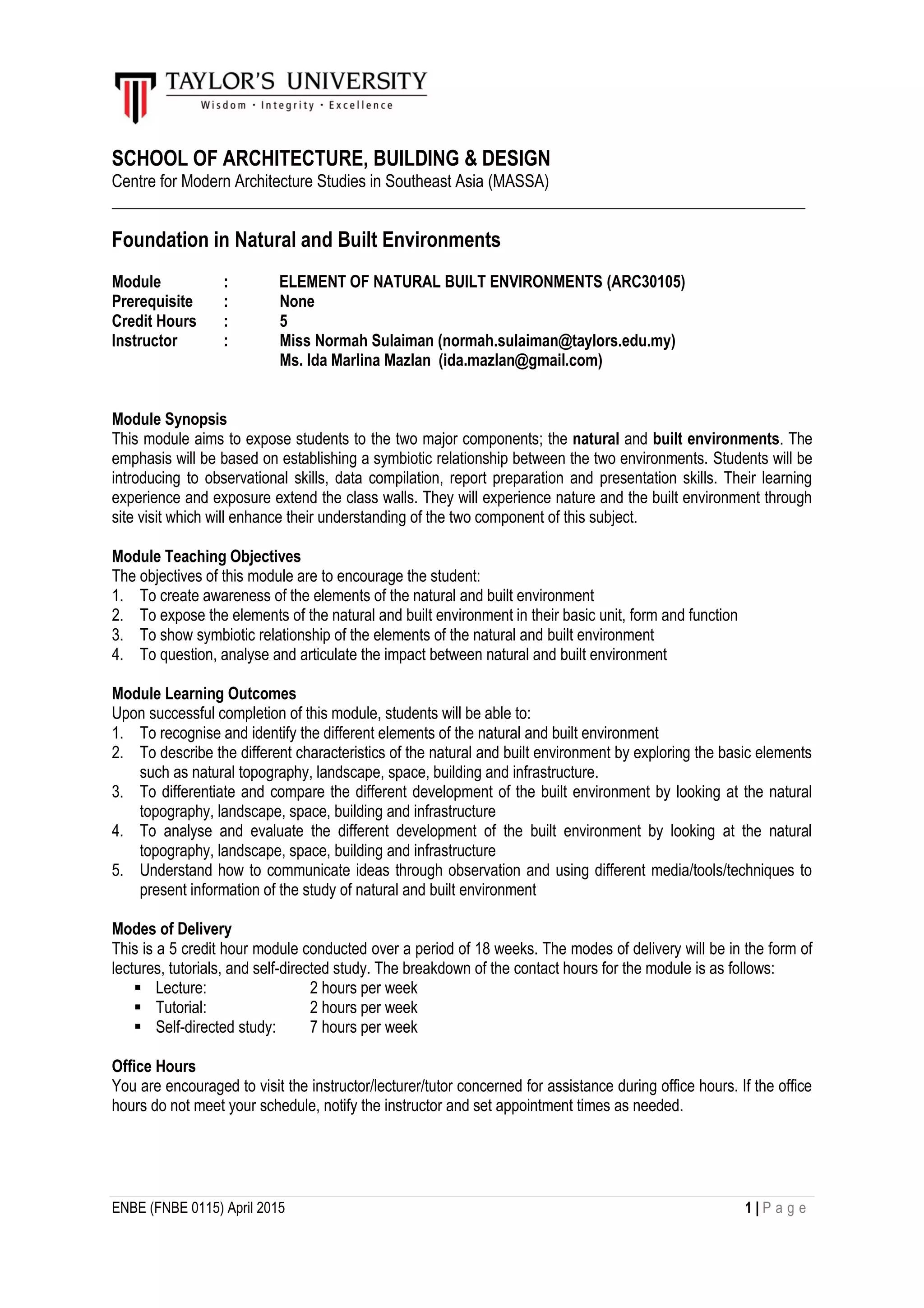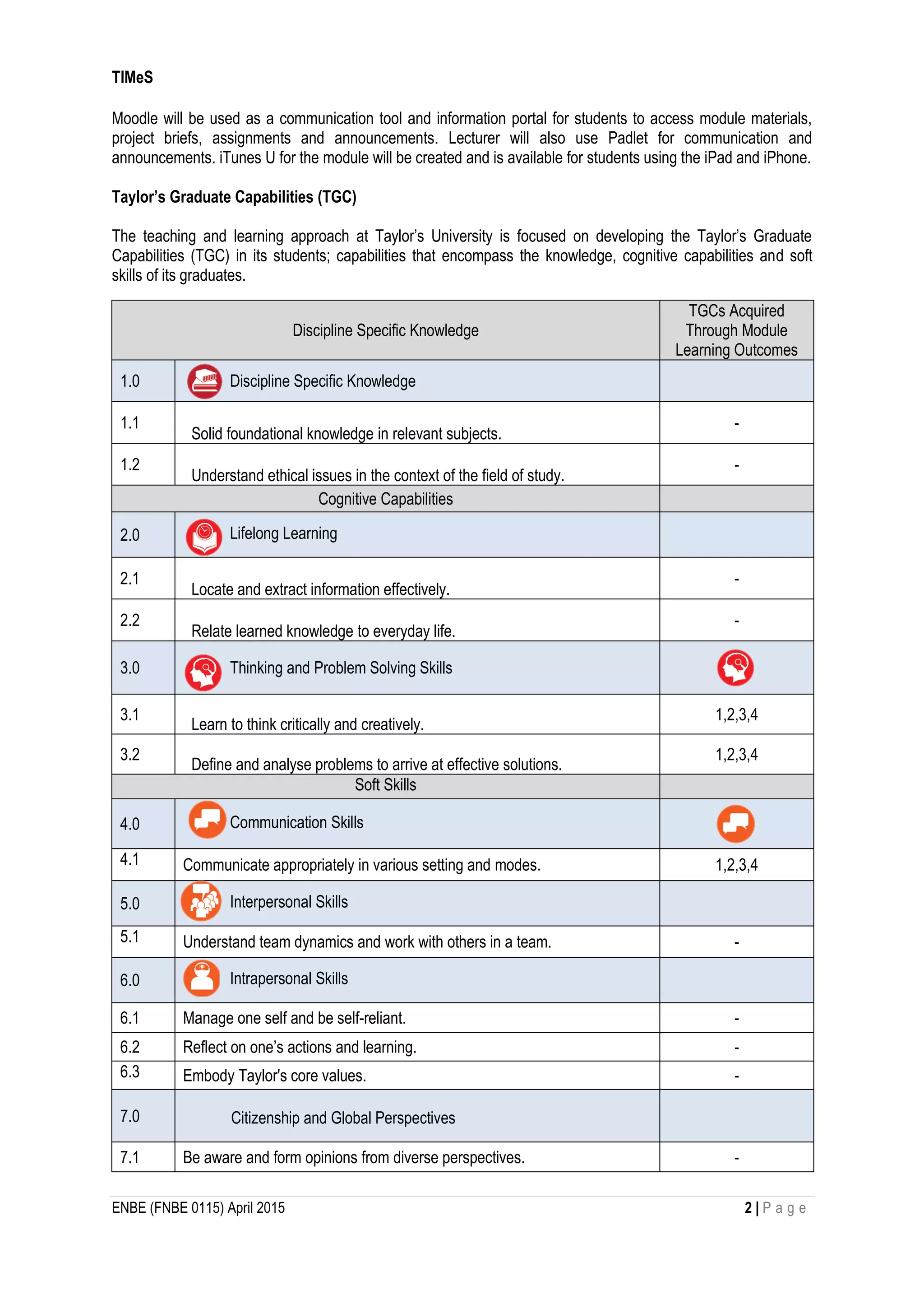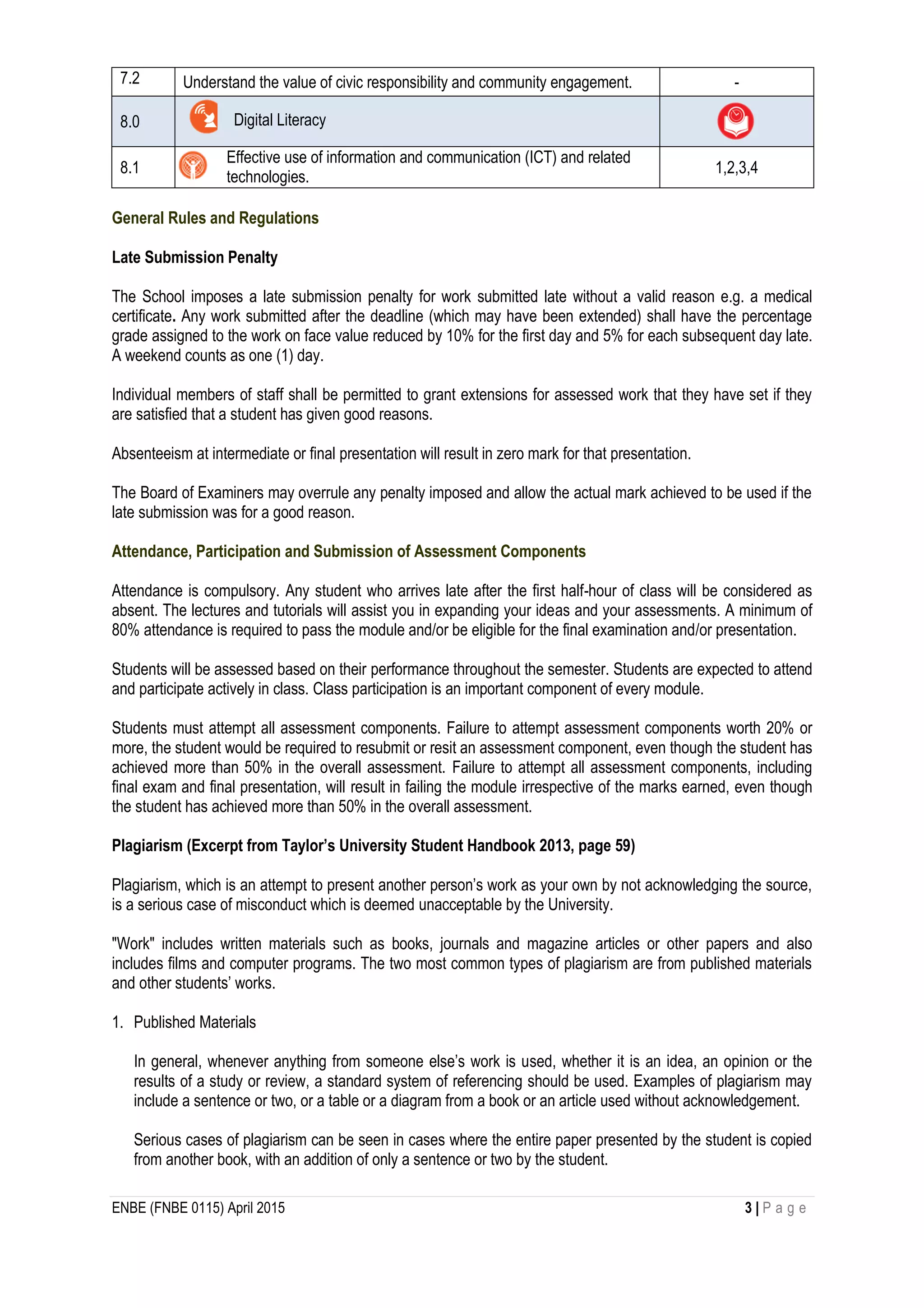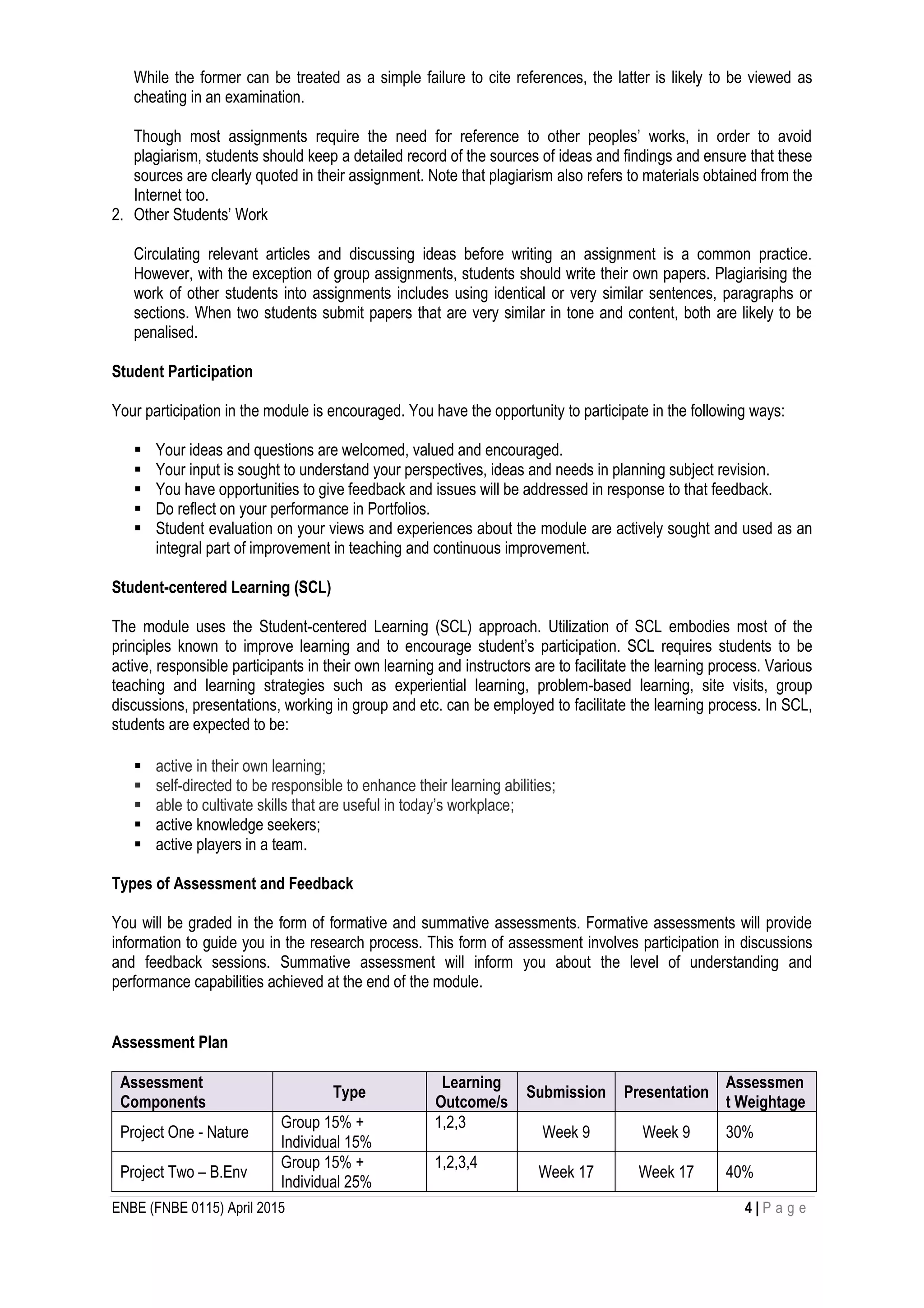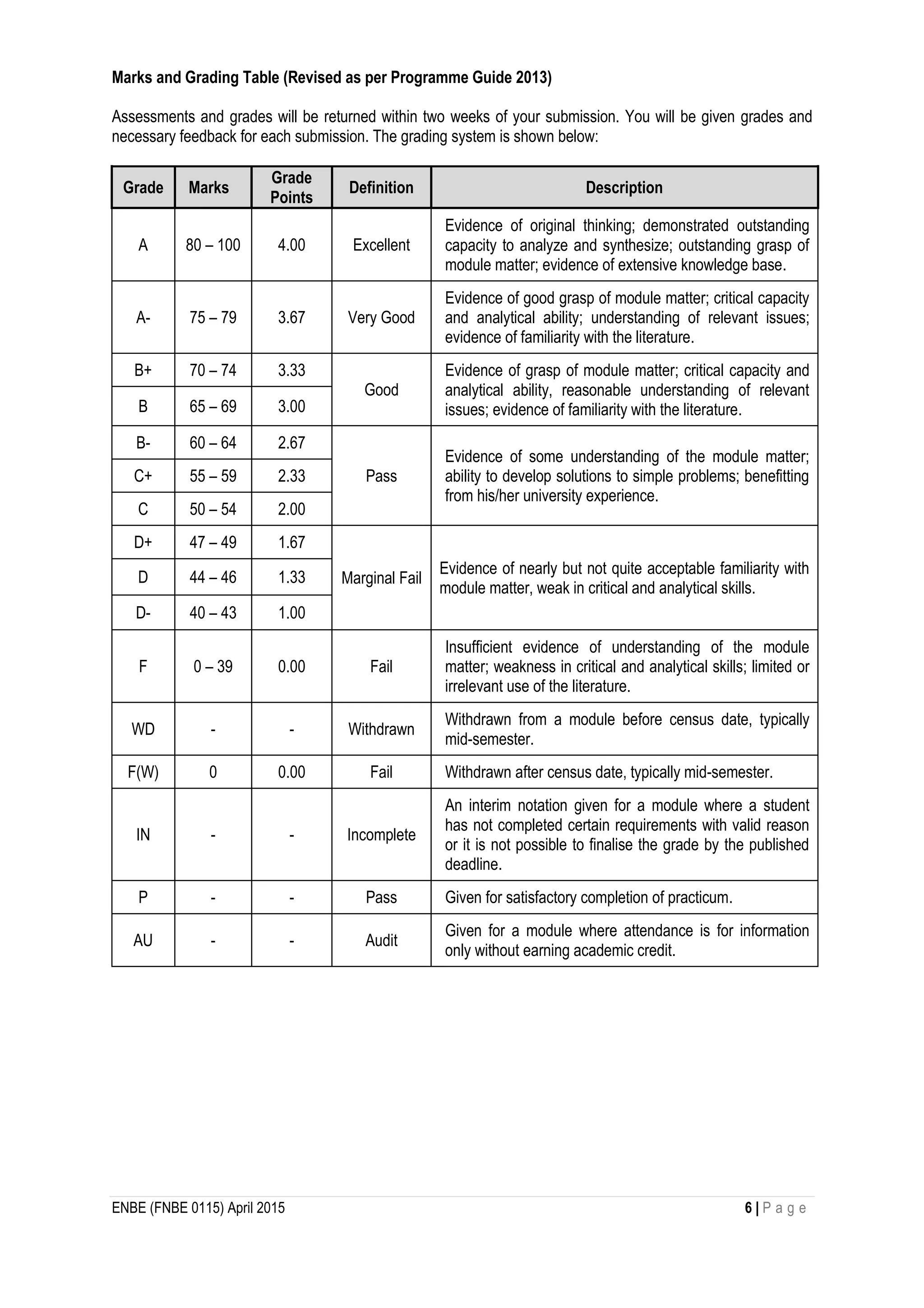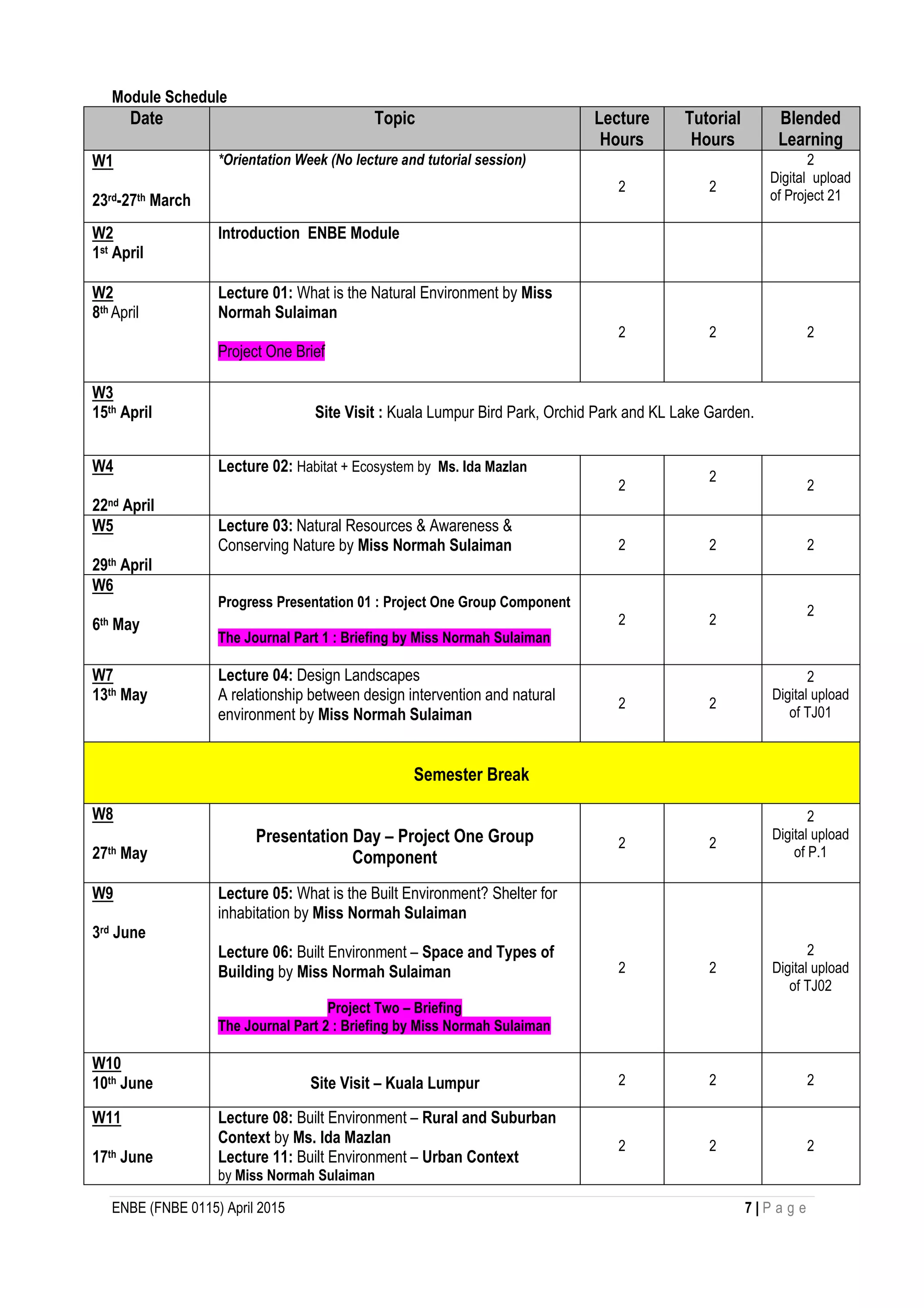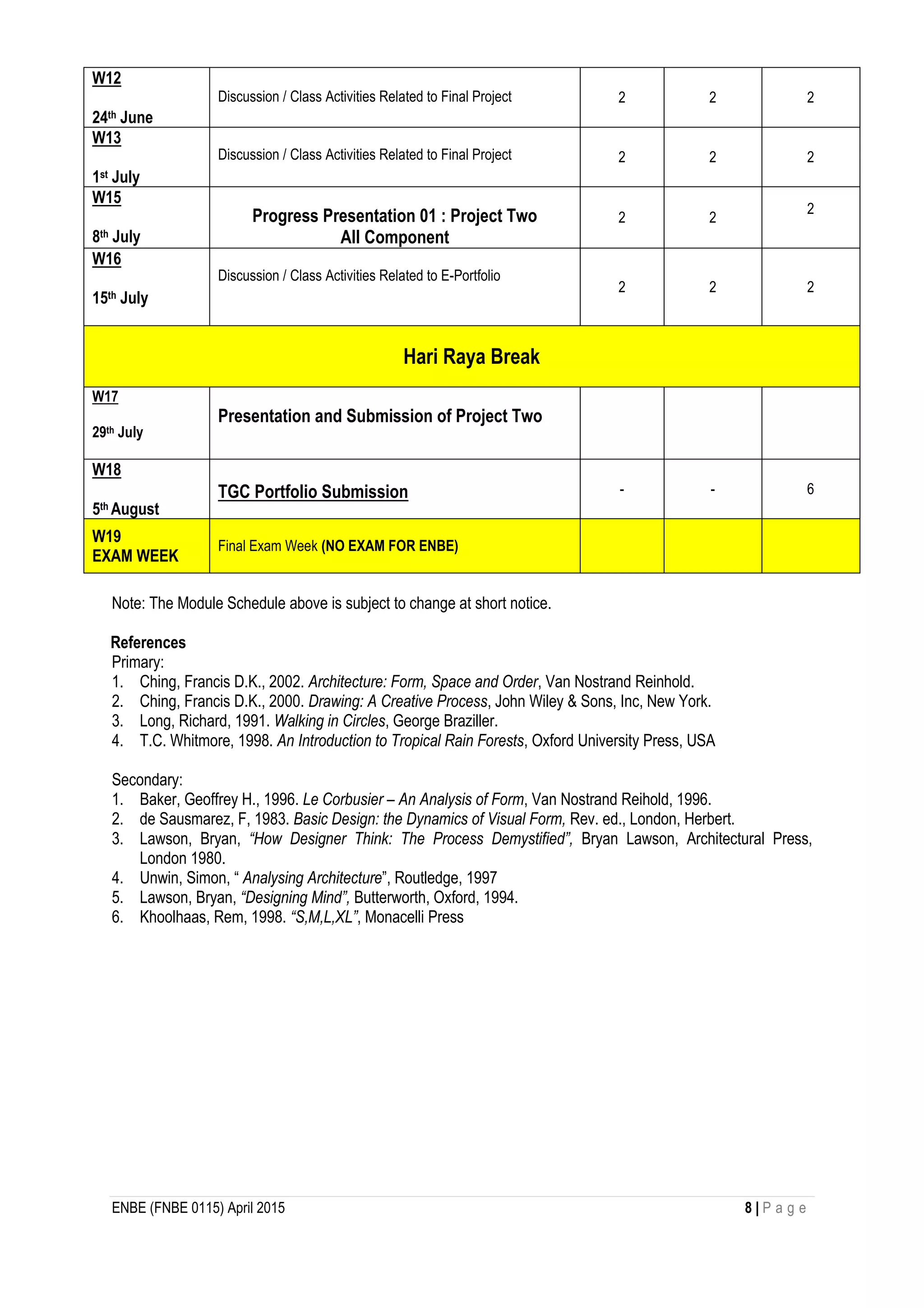This document provides information about a module called "Element of Natural Built Environments" (ARC30105). The 5-credit module aims to expose students to natural and built environments through lectures, tutorials, site visits and projects. It will be taught over 18 weeks with 2 hours of lectures and 2 hours of tutorials per week. Students will complete 2 projects - the first on natural environments and the second on built environments. They will also maintain a journal and develop an ePortfolio. Assessment will be based on the projects, journal, and ePortfolio. The module uses student-centered learning and aims to develop students' skills in recognizing environments, describing characteristics, analyzing developments, and communicating ideas.
